10 reasons why light gauge steel framing outperforms timber for construction
⏱️ 5 min read
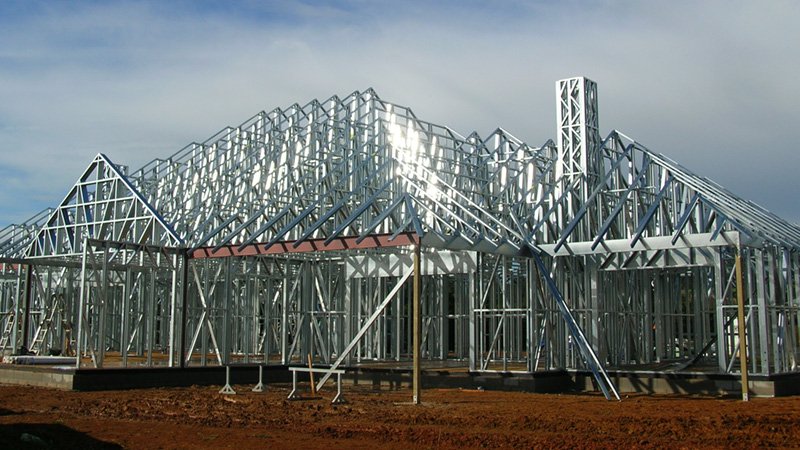
Building with light gauge steel framing leads to better buildings than timber. That’s a big call, but it isn’t an opinion, it’s a fact borne out through the experience of Howick’s team and our customers across thousands of projects globally.
For decades, we’ve been helping our customers produce steel framing, manufactured offsite using framing automation (as opposed to stud and track). And, after centuries doing things the old way, the rest of the industry is catching on, with automation.
What many builders don’t realise is that it’s surprisingly easy to make the switch from traditional timber to construction with light gauge steel (LGS – also known as cold formed steel) framing. You might even find your competition has made the switch already.
Time to look again at light steel for framing perhaps?
If you are starting to question the way you build, and how you can lift your construction business performance, here are 10 reasons steel framing equals better profitability and superior results than timber.
No time? Here’s why LGS outperforms timber for framing
-
Faster build times – by 50% or more
-
More accurate – to within 0.5mm
-
Over 60% lighter
-
10 x less waste – less than 2%
-
More environmentally friendly – 99% recyclable
-
Stronger - highest strength-to-weight ratio of any framing material
-
Fire resistant
-
More durable – so fewer warranty claims
-
Easier to work with (seriously!)
-
Improved efficiency – produce more with less
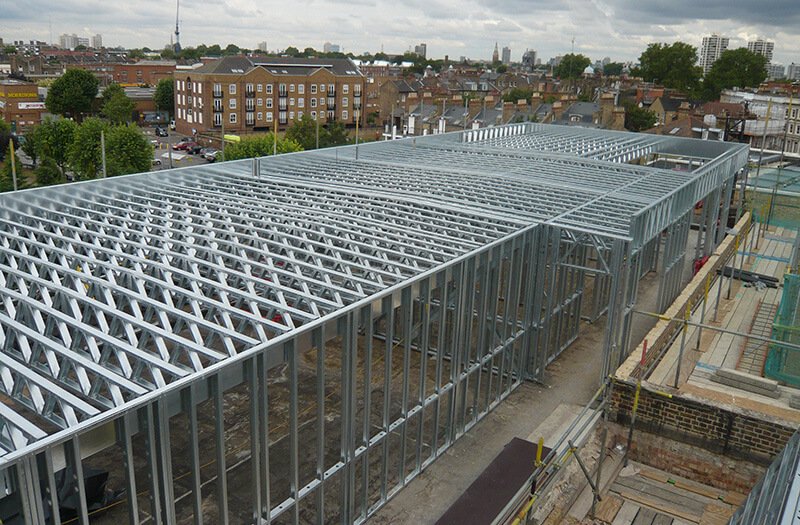
1. Faster build times
Building with LGS framing can be 50% or more faster than timber, which significantly reduces labour costs. Because fabrication of all components is completed offsite, there’s far less work for builders to do, and less time spent onsite - no cutting or drilling holes required, just following instructions and assembling – it’s like a kit of parts.
The contractors behind the Victoria Lane Apartments in Wellington, NZ found this out for themselves. Rollforming Services provided 67,000 metres (220,000 feet) of framing for them to build more than 100 high end apartments over 12 floors.
The project required 50% less labour than traditional timber framing would have, with an easier installation.
There are countless other examples too. We work with a group home builder that switched from timber to LGS and found that they were able to build framing for one 180 square metre (2,000 square foot) house per day.
2. More accurate
Timber can be accurate, but there’s no accounting for human error. This isn’t a problem for LGS framing, which is accurate to within 0.5mm when manufactured using Howick FRAMA™ roll-forming technology.
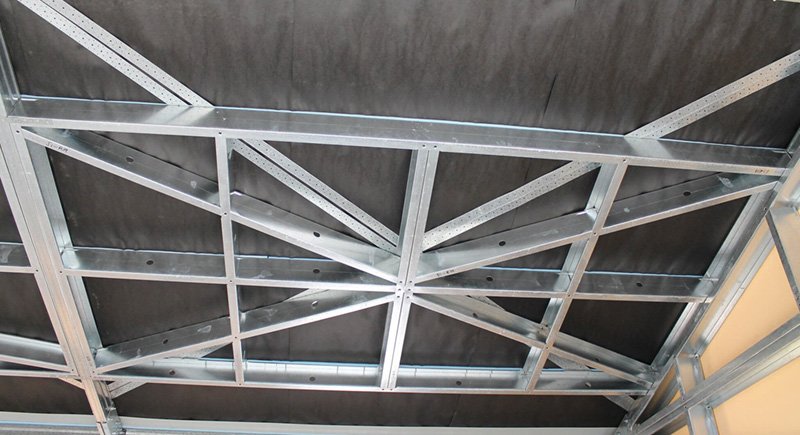
That means less reworking, less downtime and fewer penalties. That, of course, leads to better efficiency, faster completion, and increased profitability.
3. Over 60% lighter
Your customers will thank you when you switch to steel, but your builders and labourers may thank you more. You will make their jobs easier because LGS framing is around a third of the weight of traditional timber framing - creating a lighter, stronger structure than timber or concrete.
This makes it easier to handle and transport, reducing transport costs and making your site safer.
4. 10 x less waste
Construction using panelised steel framing produces 10x less waste than traditional timber framing. A Howick customer, Lark Builders, found this when they modernised their shed building business by switching from traditional timber framing to steel.
Total waste went from 20% down to less than 2%, which significantly reduced their cost of materials, as well as waste transport and disposal.
President of Lark Builders, Bob Moore says the change was remarkable:
“You can take a steel building – say one that is 12 ft by 24 ft – and in your hand hold the steel you wasted running out that product. And we actually get paid some for the scrap steel.”
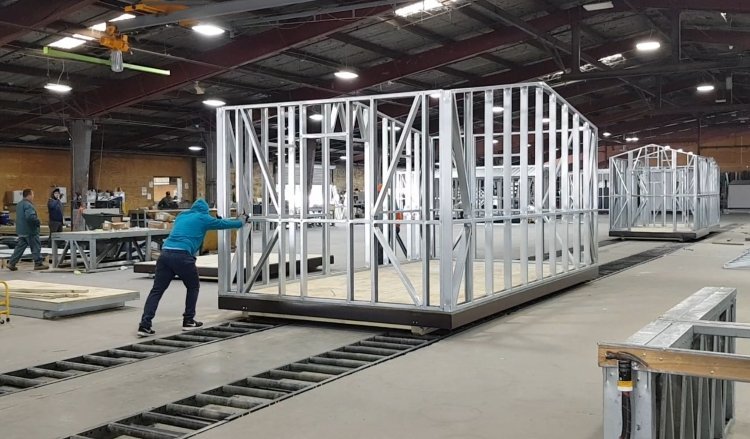
5. More environmentally friendly
As little as 36% of a harvested tree ends up in the final wood product, while the rest often ends up in landfill, according to the AISC. Then the timber construction process produces more waste from offcuts, some of which ends up in landfill. Once the building reaches the end of its life, most of the timber typically ends up (guess where) in landfill.
Steel is different. It’s the most recycled material on the planet – construction only produces 2% waste, and once the building is done it’s 100% recyclable without product degradation, according to NZ Steel.
6. Stronger
Timber is susceptible to rot, pests, moisture ingress and fire damage. It is also not as strong as steel, so in extreme weather conditions it can snap.
Steel, on the other hand, is extremely resistant to most damage. In fact, when we exhibited at the Tampa BUILD Expo in the USA we found that smart businesses throughout the state were investing in LGS roll-forming technology. It’s no surprise, after $200 billion in hurricane damage occurred in Florida in 2024 alone.
These businesses have found that steel is the perfect framing material for high wind, flood prone, and humid environments. It has the highest strength-to-weight ratio of any commonly used framing material according to the SFIA, and it is galvanised so it can last for several decades in the harshest environments.
Plus, its natural ductility means that in high winds up to 240kph (149mph) steel will bend and flex, rather than crack and splinter like wood.
7. Fire resistant
Electrical faults are among the most common causes of house fires. The faults are often in wall cavities, they spark and ignite, then start to burn timber framing, spreading through the cavity and consuming the house.
Steel framing reduces fire risk, because electrical fires cannot ignite steel, and if the fire does come through wall linings it will not spread within the cavity. This also reduces risk from natural disasters like wildfires.
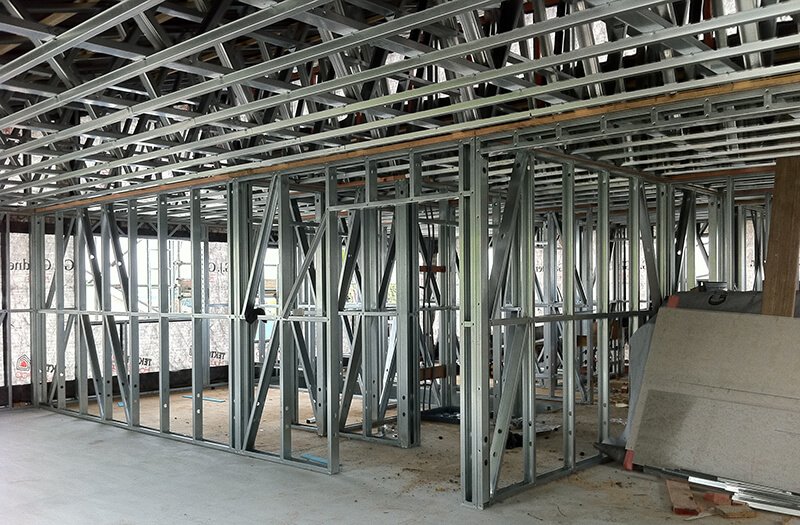
8. More durable
Due to its durability and weather resistant properties, steel lasts longer than wood. Because of the accuracy with which cold formed steel framing is produced, and the required thermal break in place which protects the stud from condensation, buildings made with these materials generally last longer, with less maintenance required.
For the builder, this means fewer warranty claims in the early years of the building’s life and happier customers - for the building users, the benefits are obvious.
9. Easier to work with
There’s a myth in the industry that steel is more difficult to work with than timber, but that’s just because timber is what the industry has always used.
LGS framing, produced using a Howick machine, is incredibly easy to work with. Because it is lighter, moving it around site is a breeze. It is also incredibly accurate, with pre-punched holes and no snipping or cutting required. And because roll-formed steel is incredibly straight and true, creating a high-quality finish on interior ceilings, flooring and walls is much easier.
In fact, one of our US based customers, Wolf Partners, adopted LGS produced by roll-forming technology in their builds because they saw a small team assemble framing for a 2,000 square foot cigar shop in just one morning.
10. Improved efficiency
Any good accountant will tell you that succeeding in business is all about cashflow, and switching to LGS can help reduce your costs significantly.
Most notably, switching helps you produce more product with less. In fact, when one of our customers switched from timber to steel with a FRAMATM machine, they managed to continue producing 75 sheds a day. The difference is, they could now do it with 6 staff instead of 26.
Ready to steel a commercial advantage?
Businesses around the world are discovering the benefits of LGS framing. We’re not surprised, after all - the advantages in speed, efficiency, ease, accuracy, safety, and reduced waste all add up to one thing.
Better buildings, made smarter.
If you’re thinking about the future of your business, why not take action to make it brighter? Talk to Howick today.
If you found this article valuable, don’t forget to share it!
February 2025 #Features